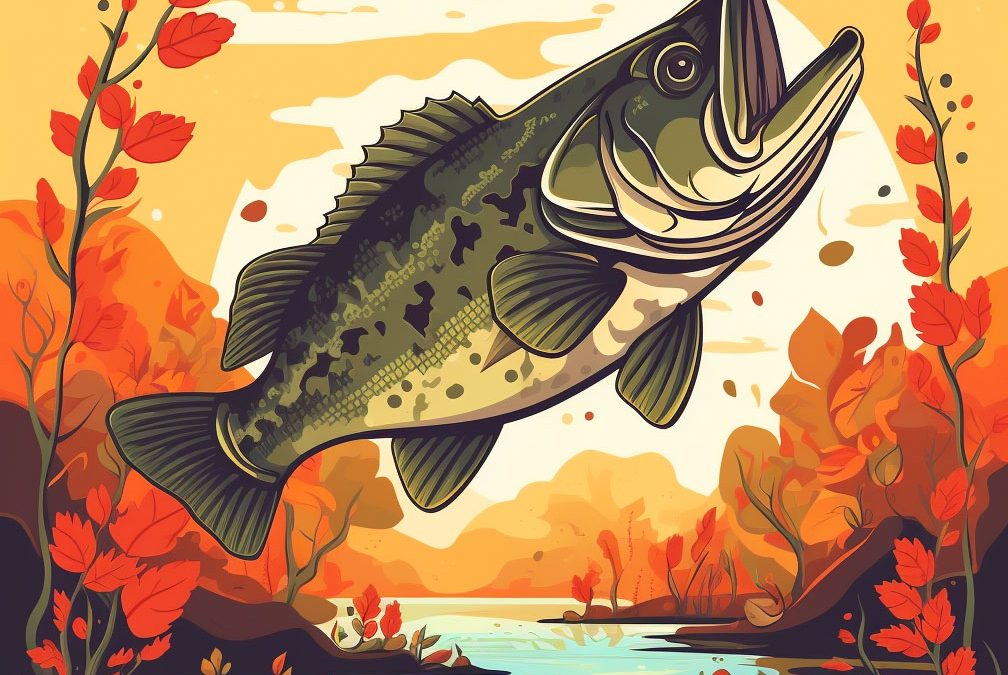Fall Bass Fishing: A Comprehensive Guide
Fall is a transformative season that marks the transition from summer to winter. It is a time when many outdoor enthusiasts start to pack up their gear and bid farewell to the warmer months. However, for passionate anglers, the fall season signals the best time to go bass fishing. It is a time when bass begin to feed more aggressively to store energy for the winter months, making it a perfect opportunity for anglers to catch a trophy-sized bass.
In this comprehensive guide, I will share my insights on fall bass fishing to help you make the most of your fishing experience. From the equipment, understanding the behavior, fishing techniques, top fishing locations, and safety considerations, we will cover everything you need to know before heading out on your next fishing trip.
Late Summer to Fall Transition
As an avid bass fisherman, there’s nothing quite like the transition from late summer to fall. The change in temperature and light conditions mean that the bass will be transitioning as well, and it’s my job to adjust my tactics accordingly.
Cooling Waters
In the late summer months, the water temperature can be quite warm, often exceeding 80 degrees Fahrenheit. This means that the bass are typically going to be holding in deeper water, seeking refuge from the warmest temperatures in the middle of the day. During these times, I’ll typically target submerged structures such as points, drop-offs, and weed lines with deep diving crankbaits and jigs.
Shallower Water
As the temperatures begin to drop in the fall, however, the bass will start to move from these deeper areas and become more active. They’ll start to move into shallower water, looking for food in preparation for the colder months ahead. This is when the real fun begins.
Fall topwater
One of my favorite tactics during this transition period is to use topwater lures such as buzzbaits and poppers. The cooler water temperatures mean that the bass will be more willing to come up to the surface to feed, and topwater lures can elicit some explosive strikes.
Soft Plastics
In addition to topwater lures, I’ll also use soft plastic baits such as worms and creature baits. These baits can be rigged texas-style or wacky style and worked slowly along the bottom. This tactic can be especially effective when the bass are holding tight to cover such as logs or rocks.
Changing Weather
When fishing during the late summer to fall transition, it’s important to pay attention to the changing weather patterns. Frontal systems can really trigger the bass to become more active and feed more aggressively. I always keep an eye on the weather forecast and plan my fishing accordingly.
Baitfish Availability
Another important factor to consider is the availability of baitfish. During this transition period, the baitfish will also be on the move and bass will be following them. I always keep an eye out for schools of baitfish and try to match my bait to what the bass are feeding on.
Finicky Feeders
One thing to keep in mind is that during this transition, the bass can be quite fickle. They may be located in one area one day and then be completely gone the next. It’s important to be flexible and willing to adjust your tactics and location as the conditions change.
The Aggressiveness Begins
As the fall progresses, the bass will continue to move shallower and become more aggressive. This is when I’ll start to break out the lipless crankbaits and squarebill crankbaits. These lures can be worked quickly and cover a lot of water, allowing me to locate actively feeding bass.
Overall, the late summer to fall transition is one of my favorite times to fish for bass. The changing conditions mean that the bass are on the move and becoming more active, and it’s my job as a fisherman to adapt to these changes and put myself in the best position to catch fish. With the right tactics and a bit of luck, I know that I’ll be able to have success during this transition period and catch some big bass in the process.
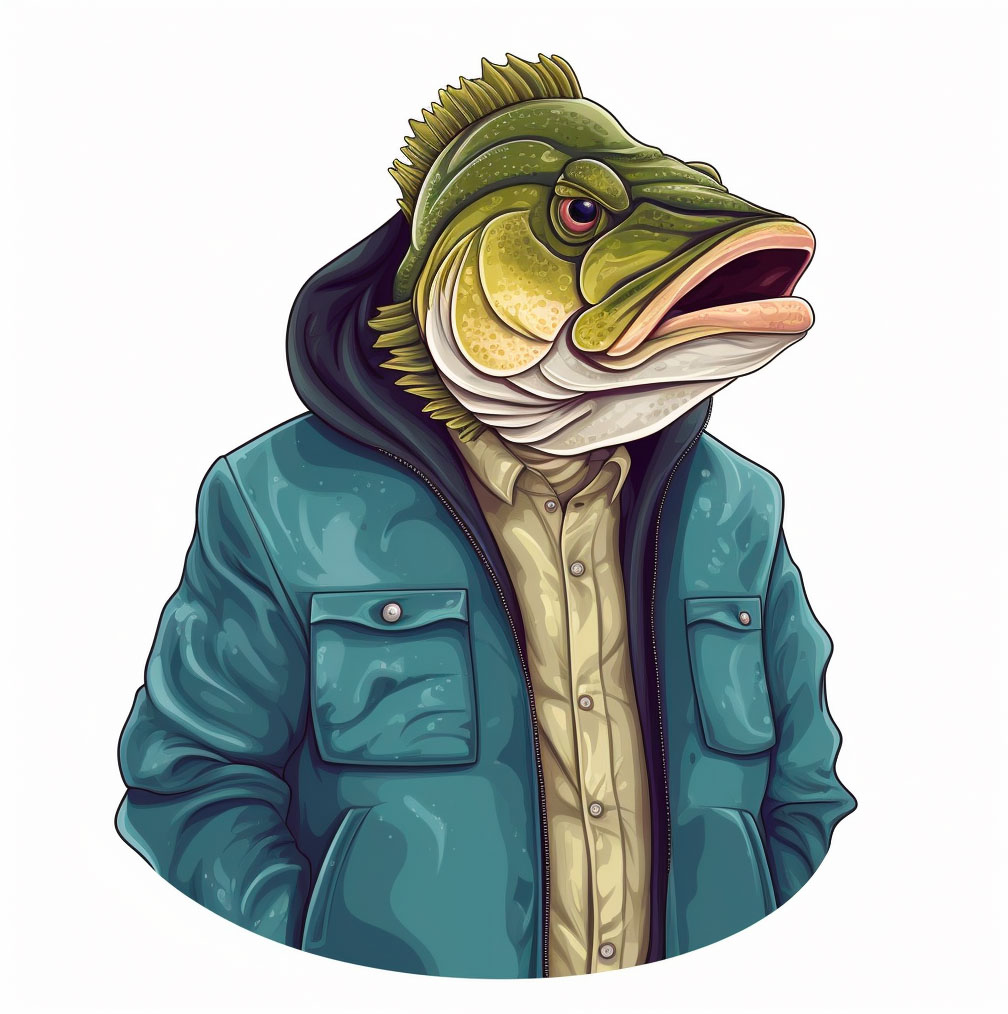
Where To Find Bass During The Fall: Cooling Water
Shallow waters that are surrounded by deeper water or drop-offs
As a passionate angler, I have always been fascinated by the idea of catching elusive bass in shallow waters in the fall. There’s something special about chasing these fish in the autumn season, when they are actively feeding and preparing for the long winter ahead. Here, I’ll take you through my experiences over the years and share some tips that have worked for me when catching bass in shallow waters in the fall.
Migratory Pattern
Firstly, it’s important to understand that bass have a migratory pattern during the fall, moving from deeper waters towards shallower areas in search of baitfish. When the water temperature starts dropping, these fish become more active, and their metabolism increases. This makes them more likely to feed and triggers their migration towards the shallower regions. As an angler, this is good news because it means we can target them in these areas.
Choosing The Right Lure
One of the key things to keep in mind when fishing for bass in shallow waters in the fall is to choose the right lure. During this season, it’s best to use baits that mimic the baitfish that the bass are hunting. This means using lures like jerkbaits, crankbaits, and spinnerbaits that closely resemble shad, herring, or other common prey. By doing this, we can increase our chances of attracting big fish to our lines.
Water Temp
Another important tip is to be aware of the water temperature. As mentioned earlier, bass become more active in cooler water, so it’s essential to find areas where the temperature is dropping. This often means looking for shallows near deeper water where the bass can move in and out with ease. In these areas, there is often plenty of cover, including weed beds, logs, and rocks – which provide shelter for baitfish and make them attractive to bass.
Don’t Spook The Bass
Once we’ve found the right location and lure, it’s important to approach the area quietly and stealthily. Bass are opportunistic hunters, but they can also be easily spooked. Dropping an anchor too loudly, slamming hatches, or making other loud noises can quickly send these fish fleeing for cover. Instead, it’s better to approach slowly, using trolling motors or oars to avoid disrupting the water.
Retrieve
When casting, I like to use a slow and steady retrieve. This allows the bait to mimic the natural movement of the baitfish and makes it more attractive to bass. Occasionally, I’ll vary the speed or stop the retrieve altogether and let the lure drop. This can often trigger a reaction strike from a hungry bass.
Match The Hatch
Another effective tactic is to ‘match the hatch’ – that is, using lures that mimic what the bass are currently feeding on in the area. This means paying attention to the type of baitfish in the waters and using lures that look similar. By doing this, we can increase the chances of getting a bite from a fish that is already actively feeding.
Don’t Give Up To Early
It’s also essential to stay patient when fishing for bass in shallow waters. These fish can be elusive and might not take the bait immediately. It’s easy to get frustrated and start changing lures constantly, but this approach is rarely effective. Instead, it’s better to stay focused and committed to the approach that you’ve chosen. If nothing bites, it’s always worth trying a different area, but too much changing and moving around can often be counterproductive.
In conclusion, catching bass in shallow waters in the fall can be a challenging but rewarding experience. By using the right approach, lure and technique, we can increase the chance of landing a big fish. As an angler, remember to be patient, stay stealthy, and match the hatch. With a little bit of luck and skill, these tips will help you get that big fall bass you’ve been dreaming of.
Structures like rocks, logs, and weed beds
As a passionate angler, I love fishing all year round. But when it comes to the fall season, there is something special about it that makes me put on my fishing gear and go straight to the nearest water body.
One of the things that always excites me about fall angling is catching fish around structures like rocks, logs, and weed beds. Knowing that these structures attract fish gives me an adrenaline rush, and it always feels like a challenge when I successfully catch one.
As the leaves start to change their colors and the temperature drops, the fish become more active and start to move closer to these structures. They use them as cover and hunting spots, making it easier for us anglers to target them.
One of my favorite spots to fish during the fall is the weed beds. The weeds offer so much cover for the fish, and it’s a perfect place for them to hunt for prey. When fishing weed beds, I always look for any openings or gaps in the weeds where I can cast my lure.
A weedless lure, like a spinnerbait, is perfect for fishing in weed beds because it can go through the weeds without getting caught. I work the lure slowly through the weed bed, pausing every now and then to give the fish a chance to strike.
Another structure that I love fishing around during the fall is rocks. Rocks offer the fish a place to hide and ambush prey. When fishing around rocks, I like to use a jig or a drop shot rig. I cast my lure alongside the rock and gently bounce it off the bottom, mimicking the movement of prey.
Log jams are another great structure to target during the fall. Logs offer cover and a hunting spot for the fish. When fishing around logs, I like to use a crankbait or a topwater lure. I cast my lure near the log and retrieve it slowly, watching for any signs of movement or a strike.
Fishing around structures like rocks, logs, and weed beds requires patience and persistence. It can take some time to figure out where the fish are hiding, and it can be easy to get caught up on the structure and lose your lure. But the reward is worth it when you finally catch a fish.
Fall fishing is also a great time to experiment with different lures and techniques. The fish are more active during this time, and they are more willing to strike a lure. You can try using a variety of lures, such as crankbaits, spinnerbaits, jigs, and topwater lures, to see what works best.
One important thing to keep in mind when fishing around structures is to be mindful of the environment. Make sure you do not damage the structure or the surrounding area when casting your lure. We want to preserve these structures so that the fish continue to have a place to hide and hunt for years to come.
In conclusion, fishing around structures like rocks, logs, and weed beds in the fall is a thrilling and rewarding experience. With a little patience and persistence, you can catch some of the biggest fish of the year. So grab your fishing gear, find a spot with some structures, and start casting. You never know what kind of fish you might catch.
Running water, especially areas where the current slows down
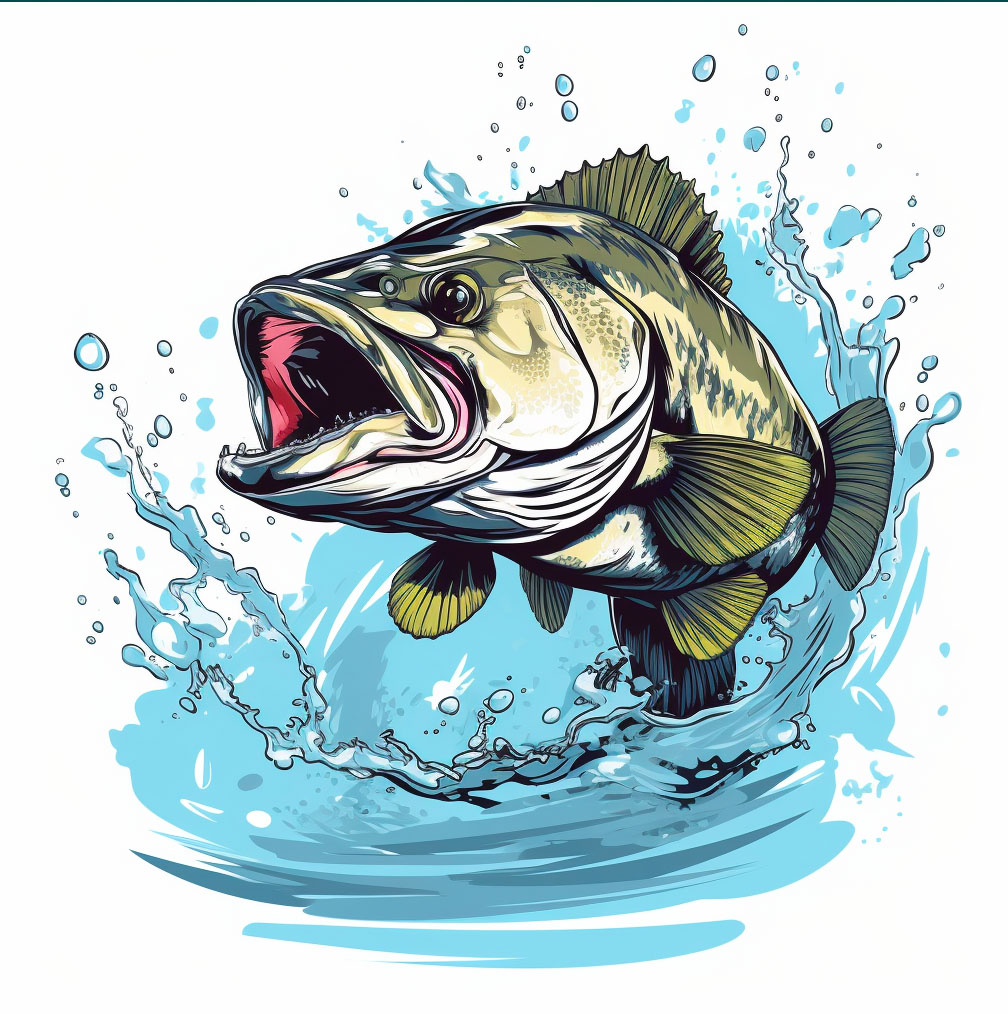
First off, let me explain why I enjoy fishing near running water in the autumn. As the weather cools, bass near rivers, streams, and creeks become more active. They start to move from their summer hiding spots to shallower water in search of food. This change in their behavior makes them much easier to catch, especially if you are fishing with lures or live bait.
My preferred location is a river near my hometown, where the water flow is strong, but not too fast. These types of rivers can be great places to find bass, as they often offer plenty of spots for them to hide and ambush their prey. I like to fish areas near rocks or fallen trees where bass are known to hang out and wait for their next meal.
Jerkbait
One of my go-to methods for catching bass near running water is to use a jerkbait. Jerkbaits are artificial lures that simulate the movements of an injured baitfish. They can be especially effective when fishing in the early morning or late afternoon, when bass are most active. To use a jerkbait, I cast it out and then jerk it in a quick, erratic motion, allowing it to pause and dive in different directions. This erratic motion mimics the behavior of an injured fish, which bass find irresistible.
Spinnerbait
Another lure I like to use is a spinnerbait. These lures consist of a metal blade that spins when retrieved, creating vibrations and flashes of light that simulate the movement of a small school of baitfish. Spinnerbaits can be fished in deeper water, where bass typically go to hide during the day. I like to cast them out, let them sink for a few seconds, and then start the retrieve. I vary the speed of the retrieve until I find what the bass are looking for.
Popper
If I’m feeling particularly daring, I like to use a topwater lure, like a popper. These lures are designed to float on the surface and create a disturbance when retrieved. The popper makes a loud “popping” sound that attracts bass to it, and you can watch as the fish comes up and strikes the lure. Topwater fishing can be very exciting, especially when you see a big bass explode on your lure.
Live Bait
When it comes to live bait, I prefer to use minnows. Bass love to eat smaller fish, and minnows are an easy target. I typically rig the minnow with a small hook and a split shot weight, and then cast it near a rock or tree. The minnow will swim around and attract the attention of any nearby bass, which will then strike the bait.
One thing to keep in mind when fishing near running water is the effect of current. The current can be very strong in some places, which can make it difficult to keep your lure or bait in one spot. I suggest using a weight that is heavy enough to keep your bait in the desired area, but not so heavy that it sinks to the bottom. You want your bait to stay in the strike zone as long as possible.
Unpredictability
Fall weather can be unpredictable, so it’s important to dress appropriately. I like to wear layers, so I can adjust my clothing depending on the temperature. I also wear waders, which allow me to fish in the river without getting wet. Wading can be a great way to get closer to the fish and have more control over your lure or bait.
In conclusion, autumn can be a fantastic time to catch bass near running water. With the right lures and techniques, you can have a successful day on the river. Whether you prefer jerkbaits, spinnerbaits, or live bait, there are plenty of ways to target bass in the fall. So, grab your gear, find a river or stream, and get ready to catch some fish!
Near docks, which provide shade and cover for bass
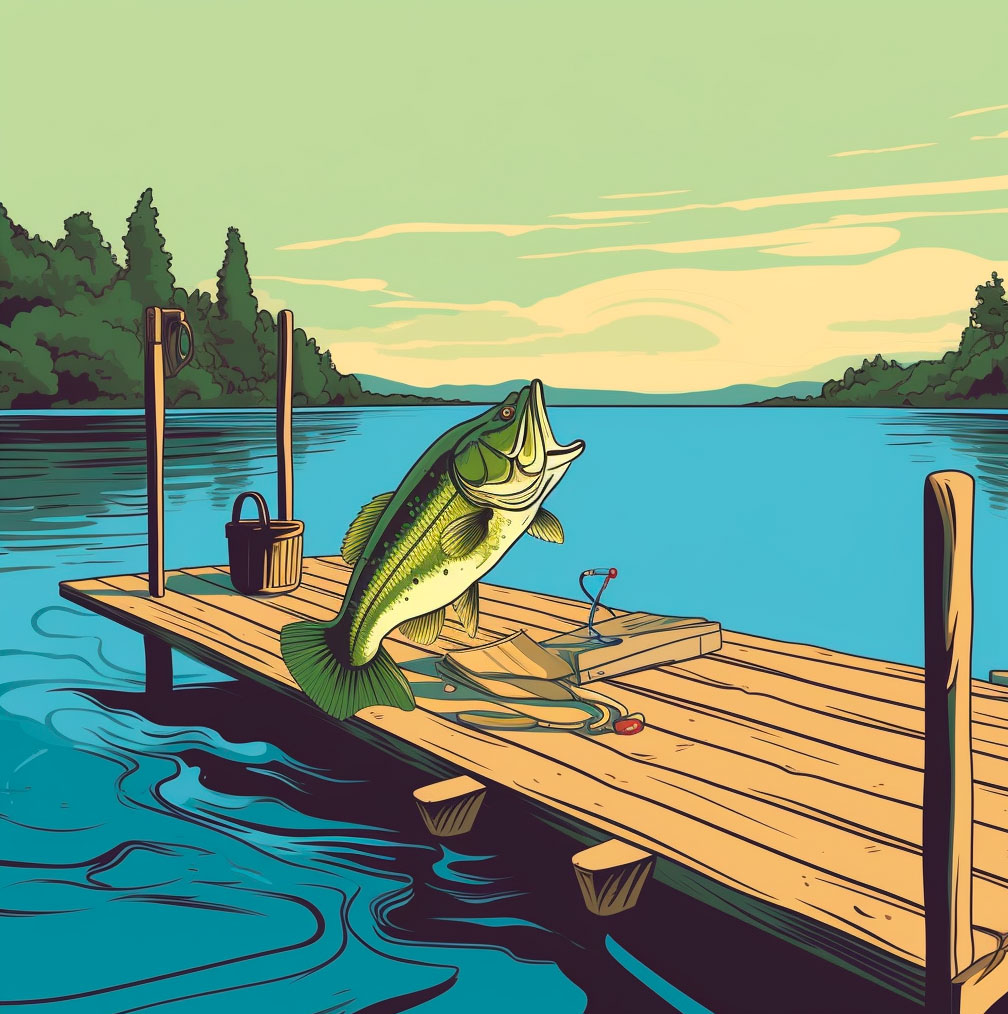
During the fall, bass tend to move into shallower water as the water temperature drops. Docks provide a perfect residence for bass as they offer shade, cover, and a variety of prey. This is why docks become prime locations for bass fishermen to test their skills. While it may seem like an easy task, catching bass in these environments requires skill, patience, and attention to detail.
Fish The Right Docks
Whenever I arrive at the docks, I start my fishing process by scouting the waters. This entails mapping out where the docks are located and noting the direction of the wind, which is crucial for the retrieve style and fish location. Additionally, I examine the water for signs of life, such as ripples or baitfish activity near the docks. This helps me establish a plan of attack.
Fishing The Edges Of Docks
Next, I cast my lure close to the dock and work it methodically. Bass love to hang around the edges of the docks, especially if there’s some structure or vegetation close by. I try to cast as close to the dock as possible and work my bait smoothly to mimic natural movements. This can require patience; however, I know that if I wait long enough, I’ll get a bite. It’s important to slow down and work methodically, always keeping an eye on where the line goes and what’s happening below.
Soak It
When fishing docks, I try to keep my lure in the water as long as possible. I use a slow and steady retrieve technique and avoid working my lure at a fast pace, doing so simply scares the bass away. Additionally, I try to keep the lure close to the bottom of the dock, as bass tend to hover around the structure. Again, patience is key when fishing in these environments.
Bait Selection Near Docks In The Fall
In terms of bait selection, choosing the right one can make a difference. During the fall months, bass are often focused on feeding on small baitfish and minnows. As a result, lures such as spinnerbaits or jigs with a natural-looking color provide great results. Some anglers also swear by topwater lures such as poppers, chuggers, and prop baits. These types of lures create noise and commotion on the surface, luring curious bass out to investigate.
By sticking to these methods and paying attention to what’s happening below the surface, I’ve caught some of the biggest and most exciting bass in my life. When fishing near docks, it’s important to remember that they won’t always produce activity. By being patient and fishing slowly, bass anglers can have fun and potentially catch a great bass.
In conclusion, catching bass near docks during the fall months has become one of my go-to spots throughout my fishing journey. While I love to fish in other environments, there’s something truly special about catching bass while staying close to the docks. Through careful planning, patience, and attention to detail, anglers can make the most of this experience. With the right equipment, the right bait, and a little bit of luck – you might just walk away with the catch of the day.
Transition zones
Transition zones are areas where different types of habitats meet, such as where shallow water meets deep water or where rocks meet vegetation. Bass tend to congregate in these areas during the fall as they move from their summer haunts to their winter homes. Finding these transition zones can be the key to catching big bass in the fall.
One of my favorite transition zones to fish in the fall is where shallow water meets deep water. Bass love to move out to deeper water as the temperatures cool, but they still need to feed. This makes the shallow/deep transition zone an ideal spot to catch them. I like to look for areas where a shallow flats drops off into a deep channel or where a weed line ends and the water depth increases. These spots are often productive and can hold a lot of fish.
When fishing a shallow/deep transition zone, I like to use a variety of baits. A Texas-rigged worm or a jig can be very effective around the drop-off or weed line. I will also try a crankbait or a spinnerbait to cover more water and locate active fish. It’s important to experiment with different baits and techniques until you find what works best in the particular area you are fishing.
Rocks Meet Vegetation
Another transition zone that can be productive in the fall is where rocks meet vegetation. This can be a great spot to find smallmouth bass in particular. I like to look for areas where a rocky shoreline transitions to a weedy bay or where a weed line runs along a rocky point. These areas can hold a lot of baitfish and are ideal feeding areas for bass.
When fishing a rock/weed transition zone, I like to use a small topwater bait like a popper or a walking bait. Smallmouth bass can be very aggressive in the fall and will often hit a topwater bait with gusto. I will also try a drop-shot rig with a finesse worm or a small jig. The key is to fish slowly and pay close attention to any changes in structure or cover.
Changing Weather Affects
One of the biggest challenges of fishing transition zones in the fall is the constantly changing weather conditions. The temperature and weather patterns can change rapidly, which can affect how the bass are feeding and where they are located. It’s important to pay close attention to the weather forecast and adjust your fishing tactics accordingly.
Cold Fronts
For example, if a cold front is moving in, the bass may become more lethargic and less likely to chase after fast-moving baits like crankbaits or spinnerbaits. In this case, it may be more effective to slow down your presentation with a finesse worm or a drop-shot rig. Similarly, if the wind is blowing hard, a topwater bait may be less effective as the waves and chop on the water can make it difficult for the bass to see and locate your bait.
In conclusion, fall bass fishing in transition zones can be an exciting and rewarding experience, but it requires a good understanding of the habitat and the behavior of the fish. By targeting shallow/deep and rock/weed transition zones and using a variety of baits and techniques, you can increase your chances of catching big bass in the fall. And always remember to keep an eye on the weather and adjust your tactics accordingly for the best results.
Points
Points are often overlooked, but they can be a goldmine for bass during the fall. Points are defined as areas where two bodies of water meet, such as the corner of a cove or the end of a long stretch of shoreline. They provide a unique habitat for bass, as they offer both shallow and deep water access, as well as a variety of cover and structure.
To effectively fish points in the fall, I use a combination of techniques and baits. Here are some of the strategies that have worked for me over the years:
- Start shallow – In the fall, bass are often found in shallower water, as they search for warmer water and prey. I start my approach by casting towards the shallower areas of the point, using a topwater bait like a buzzbait or popper. These baits imitate the prey that bass are targeting, such as shad or bluegill. The key is to keep the bait moving, but not too fast. Bass are less active during the fall, so a slower retrieve is often more effective.
- Move deeper – If I’m not seeing any bites in the shallower areas, I’ll switch to a medium-depth diving lure, such as a crankbait or jerkbait. These baits imitate injured prey, which can trigger a response from bass. I’ll cast towards the deeper end of the point and work the bait back towards me, varying the speed and depth of the retrieve until I find what works.
- Go deep – If the bass are really hunkered down, I’ll switch to a deep-diving crankbait or a Carolina rig. These baits allow me to probe the deeper areas of the point, where the bass may be holding. The Carolina rig, in particular, allows me to feel the bottom and detect any changes in structure or cover. If I feel a bump or a change in the line, I’ll stop and let the bait sit for a few seconds, which can often trigger a strike.
- Try finesse – If the bass are really finicky, I’ll switch to finesse techniques, such as drop-shotting or using a shaky head worm. These baits are smaller and more subtle, which can be effective when the bass are less active. I’ll cast towards the deeper end of the point and work the bait slowly, pausing frequently to let the bait sit and entice a bite.
Regardless of the technique, there are some key things to keep in mind when fishing points in the fall:
- Check the weather – Fall weather can be unpredictable, so it’s important to check the forecast before heading out. Keep an eye out for cold fronts, which can shut down the bite. If a front is coming through, try to get out before it hits, as the bass will often feed more aggressively beforehand.
- Look for cover – Points often have a variety of cover and structure, such as rocks, logs, and vegetation. These areas can hold bass, so it’s important to work the bait around them. Pay attention to the type of cover that is present and adjust your technique accordingly.
- Vary your retrieve – Fall bass can be less active, so it’s important to vary your retrieve to find what works best. Try slow and steady, fast and erratic, or stop-and-go retrieves until you find what the bass are responding to.
- Be patient – Fall bass fishing can be tough, but it’s important to be patient. Keep trying different baits and techniques until you find what works. Bass can be finicky during the fall, so it may take a bit of trial-and-error to dial in the right approach.
In summary, fishing points during the fall can be an effective way to catch bass. By using a combination of techniques and baits, and paying attention to the weather and cover, you can increase your chances of success. As with any type of fishing, it’s important to be patient and persistent, and to enjoy the experience. Happy fishing!
Back bays
Over the years, I’ve learned a few tips and tricks in my journey to mastering the art of bass fishing in back bays, and now I’m excited to share them with you.
The first and most important thing to know is the behavior of bass during the fall season. As the water temperature starts to drop, bass begin to move from the deeper waters and migrate towards the shallower back bays, and they do so in search of food. Their metabolism rate increases, causing them to become more active and hungry, and they start to feed more frequently in preparation for the winter. This is the perfect opportunity for us anglers to catch some big ones.
My go-to strategy for catching bass in back bays during the fall season is to target structures such as docks, piers, and fallen trees. These structures make for perfect hiding spots for the bass and are also great feeding grounds as smaller fish tend to congregate around them. Using a jig with a craw or creature bait worked around these structures has consistently provided me with good results. Slowly crawling the bait along the bottom has been particularly useful in mimicking the natural movement of these creatures, effectively attracting the curious bass.
Another tactic that has worked well for me is the use of crankbaits and spinnerbaits. The key here is to use bait that accurately imitates the size, shape, and color of the fish that the bass are currently feeding on. Cast your bait close to structures and work it back towards you with occasional pauses to mimic the erratic movements of the fish. This technique has brought in some great catches.
When fishing for bass in back bays during the fall, it’s essential to keep your boat in the deeper waters and cast towards the shallower areas. This approach offers the added advantage of avoiding frightening the fish with the boat’s noise and movements, ensuring that they stay put in the back bays and don’t scatter off to the deeper waters.
Another factor that I consider when fishing for bass in back bays is the type of bait I’m using. In the fall, I prefer using natural bait such as shad, minnows, and worms, as they tend to be the preferred food of the bass. For dead natural bait, I attach it to a jig head and work it off the bottom. Live bait is another option that has worked wonders for me. Depending on the size of the bait, I will either hook it through the lips or back to keep it alive and swimming, baitcasting it towards the desired areas and waiting for a bite. This method has consistently brought me great results, and the live bait tends to attract larger bass.
Lastly, it’s crucial to pay attention to the right time of day to fish in back bays. With the cooler temperatures and shorter daylight hours during the fall season, bass tend to be more active during the middle of the day. This means that if you are going for an early morning or late afternoon fishing expedition, you may want to switch up your strategy and focus on different techniques such as topwater baits like frogs and poppers.
In conclusion, catching bass in back bays during the fall season can be both exciting and challenging. However, armed with these tips and techniques, you should be well equipped to tackle even the most finicky of bass. Remember to target structures, use the right bait, keep your boat in the deeper water, and pay attention to the best time of day to fish. Most importantly, be patient and enjoy the experience of being out on the water, surrounded by nature, and hopefully reeling in some great catches. Good luck and happy fishing!
Open water or flats
As a passionate angler, fall is my favorite time to fish for bass in open water or flats. The cool breeze, changing colors of trees, and the abundance of baitfish create the perfect environment for bass to feed and grow before winter. My experience tells me that fishing during the fall can be challenging, but with the right strategies and techniques, you can increase your chances of a successful fishing trip.
First, before heading out to the water, I always make sure to check the weather and water conditions. In the fall, water temperatures tend to decrease, leading to a decrease in the metabolism of bass. As a result, they will move to deeper water where the temperature is more consistent. However, they will also be active near the surface during the warmest times of the day. Therefore, it’s important to be mindful of weather patterns, as the temperature can significantly affect fish behavior.
When it comes to location, fishing flats and open water can have their own unique approach. I generally start by trolling deep water off the flats while keeping an eye on my fish finder. Once I spot a concentration of baitfish or a school of bass, I switch to a different technique such as drop-shotting or jigging.
For fishing on flats, I always look for a combination of structure and depth. Bass will often move around grass beds, drop-offs, and sandbars, using them as cover to ambush prey. I’ll usually start by casting along the edges of these structures with a finesse or a topwater lure.
For my fall fishing gear, I primarily use spinning tackle with a medium-heavy action rod paired with a 2500-3000 series reel spooled with 10-12 lb fluorocarbon line. The fluorocarbon line has the perfect combination of sensitivity and invisibility that makes it harder for the bass to detect.
My favorite lures for catching bass in open water or on flats are jerkbaits, jigs, and topwater lures. Each of these lures has its own unique presentation, and I tend to vary them based on the conditions and behavior of the fish. A jerkbait mimics an injured baitfish, making it an effective lure in cooler water.
A jig imitates a crawfish, which is a primary source of food for bass. I usually pair a jig with a trailer, which can make the presentation more enticing for the bass. A topwater lure, such as a popper or a buzzbait, can be an exciting way to catch bass in shallow water. The visual and auditory stimuli can often result in a ferocious strike.
In terms of technique, I always focus on slow and steady retrieves. Fall bass fishing can be a game of patience, and it’s essential to keep changing your technique until you find what the fish are biting on. Paying close attention to the details of the lure presentation can make a huge difference and help you capitalize on your chances of catching larger bass.
I also like to use scent products such as attractant sprays, soft plastic baits, and even live bait such as minnows. These can help attract fish to the lure and can work wonders in cooler and murky water.
In conclusion, fall bass fishing on open water or flats can be challenging but rewarding. With the right approach and a bit of patience, you can enjoy a successful day on the water. Remember to pay attention to the water and weather conditions, use appropriate gear and lures, and focus on the details of the presentation. With some perseverance, you’ll soon be able to catch some of the biggest bass of the season.
Equipment
The type of equipment you use is crucial to a successful fall bass fishing experience. Some of the essential equipment to consider include:
- Rod and Reel – A medium to medium-heavy action spinning or baitcasting rod measuring from 6 to 7 feet with a fast or extra-fast tip is ideal for most fall bass fishing conditions. A reel with a 6.3:1 gear ratio or higher is preferable for speedy retrieves.
- Line – Since fall bass fishing is often in clearer water conditions, it is better to use a low-visibility fluorocarbon line with a six to eight-pound test.
- Bait/Lures – For fall bass fishing, you should consider using natural bait such as shad, crawfish, or worms. You can also use lures that mimic the behavior of these baits such as topwater lures, crankbaits, spinnerbaits, jigs, and jerkbaits. When selecting your bait/lures, choose colors that simulate the fall forage in the water body you are fishing.
- Clothing – Fall weather can be unpredictable and can change quickly. It is important to dress appropriately by wearing clothing layers that can be easily removed or added. This sound advice will prevent you from getting cold or overheated. It is also important to wear waterproof and windproof clothing to stay dry and warm.
Understanding Fall Bass Behavior
Understanding the behavior of bass is critical to a successful fall fishing trip. Some of the bass behavior to take note of is:
- Migratory patterns – In fall seasons, bass moves from deeper waters towards the shallow, warmer waters close to the shore. They do this to feed more aggressively and prepare for the imminent winter season.
- Feeding habits – During this season, bass feed intensely to store up energy for the winter hibernation period. As such, they tend to be more aggressive in taking baits and lures.
- Water temperature and depth preferences – When fall sets in, water temperatures begin to cool, and bass become more active in cooler surface waters. When the water temperature reaches about 50-60°F, bass starts to move to shallow waters and drop-offs to feed.
Top Fall Bass Fishing Locations
Finding fish locations is vital in catching fall bass. Here are some of the top locations to look for fall bass:
- Rivers and streams – rivers and streams are usually ideal for finding fall bass because of their clear waters. Look for rocks, drop-offs, and other underwater structures to attract big bass.
- Reservoirs and lakes – Reservoirs and lakes are where most anglers prefer to fish for bass during the fall. Large reservoirs have numerous underwater features that offer multiple places for bass to hide.
- Ponds and small bodies of water – large bass can be found in small bodies of water too. The lakes and ponds characteristically have tigher quarters than larger bodies of water and provide cooler temperatures bass tend to move in.
Fishing Techniques for Successful Fall Bass Fishing
As an avid angler, fall is one of my favorite times of year to fish for bass. The cooler temperatures and changing water conditions make for an exciting challenge, but with the right techniques and strategies, fall bass fishing can be incredibly successful. In this article, I’ll share some of my favorite tips for catching bass during the fall season.
First, it’s important to understand the behavior of bass in the fall. As the water cools, bass will start to feed more aggressively in preparation for winter. They will also start to move from their summer habitats to shallower water in search of food. This means that you need to adjust your fishing techniques to match their behavior.
Fishing A Jig In Fall
One of the most effective techniques for fall bass fishing is to use a jig. Jigs are versatile lures that can mimic a variety of prey, including crawfish, baitfish, and even insects. I like to use a football jig or a flipping jig, depending on the type of cover I’m fishing.
When fishing a jig, it’s important to vary your retrieve speed and presentation. Start with a slow, steady retrieve and then experiment with quick jerks and pauses. You can also try dragging the jig along the bottom or bouncing it off of cover like rocks or logs.
Fishing A Crankbait In Fall
Another effective fall bass fishing technique is to use a crankbait. As the water cools, bass will start to move to deeper water, and a crankbait can help you cover a lot of water quickly. I like to use a medium-diving crankbait in natural colors like green or brown.
When fishing a crankbait, try to vary your retrieve speed and depth until you find what works best. You can also try bumping the crankbait off of cover like rocks or stumps to trigger a strike.
Fishing A Topwater In Fall
Topwater lures can also be effective during the fall, especially in the early morning or late evening when the water is cooler. I like to use a popper or a walking bait in natural colors like silver or gold.
When fishing a topwater lure, try to vary your retrieve speed and make sure to pause often. This will allow the lure to sit still on the surface, which can often trigger a strike from a hungry bass.
Another important technique for fall bass fishing is to pay attention to the water temperature and weather conditions. Bass will become more active when the water is cooler, but they will also move less during cold fronts or storms.
If you notice a sudden drop in temperature or changing weather conditions, be prepared to adjust your technique or move to a different location. You can also try fishing deeper or slower during these times to entice less active bass.
Finally, it’s important to fish the right areas during the fall. Bass will start to move to shallower water in search of food, so look for areas with cover like weeds, rocks, or logs.
You should also pay attention to the water depth and structure. Bass will often gather near drop-offs, points, or other underwater structure where they can ambush prey. If you’re fishing a new body of water, consider using a fish finder or map to locate these areas.
Fall bass fishing can be incredibly rewarding, but it does require some skill and patience. By using the right techniques and paying attention to the behavior of the bass, you can increase your chances of a successful trip. Remember to experiment with different lures and techniques, and be willing to adjust your strategy based on changing conditions. Good luck and tight lines!
Find The Baitfish, Find The Bass
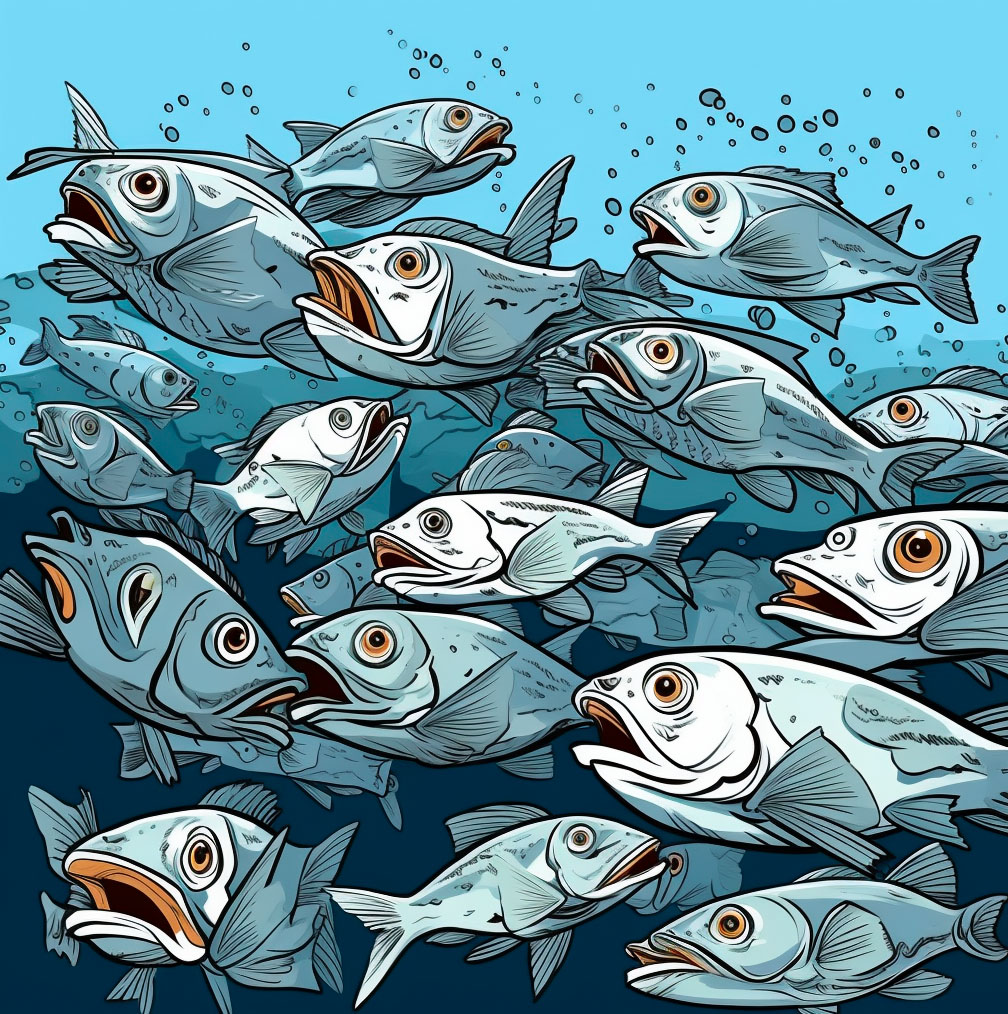
The fall season is considered by many anglers as one of the best times of the year to catch bass. As water temperatures start to cool down and daylight hours shorten, bass begin to feed aggressively in preparation for the upcoming winter months. However, finding the right baitfish is the key to catching bass during this time.
Bass are opportunistic predators who feed on a variety of prey, including crawfish, insects, and other fish species. They tend to follow the abundance of their prey, which means that locating baitfish is crucial for successful fall bass fishing. Baitfish are an essential food source for bass, and they are looking to stock up on as many nutrients as possible before the winter arrives.
To catch bass in the fall, it is essential to understand the behavior of baitfish and where they are located. Depending on the water body, some baitfish species, such as shad, herring, and alewives, can be found in large numbers in open water. Bass will often school up around these baitfish and feed on them opportunistically.
Anglers can look for signs of baitfish activity, such as jumping or schooling. Baitfish are often located close to structure, such as weed beds, drop-offs, or points, where they can find shelter and food. These areas are prime spots for bass to feed on baitfish, either by chasing them to the surface or ambushing them in the shallows.
When looking for baitfish, it is important to keep in mind the water temperature. As the water cools down, baitfish will move to deeper waters, following the thermocline, which is the layer of water where there is a rapid change in temperature. This layer is where the baitfish will stay, and it is also where bass will be found, especially in deeper lakes or reservoirs.
Once baitfish are located, anglers can choose the right bait or lure to imitate them. Crawfish or insect imitations will not be as effective as baitfish imitations since bass are looking for a protein-rich diet. Some of the most effective baits for fall bass fishing are crankbaits, jerkbaits, and swimbaits, which mimic the movement and color of baitfish. These lures can be rigged with a variety of techniques, such as a slow retrieve, a stop-and-go retrieve, or a fast retrieve, depending on the activity of the baitfish.
Another factor to consider when fishing for fall bass is the time of day. Baitfish tend to be most active during low light conditions, such as early morning or late afternoon. This is the time when bass are most likely to feed, especially if they are following a school of baitfish. Therefore, anglers should plan their fishing trip accordingly and focus on these low light periods to increase their chances of success.
In addition to baitfish, anglers should also pay attention to water clarity when fishing for fall bass. Clear, clean water allows bass to see their prey more easily, which means that their feeding behavior will be more cautious. In contrast, murky or stained water can make it more challenging for bass to locate baitfish, which might lead them to be more aggressive and more willing to strike a bait or lure.
To sum up, finding baitfish is the key to catching bass in the fall season. Baitfish are a crucial food source for bass during this time, and they tend to follow their abundance. Anglers should locate baitfish by looking for signs of activity, such as jumping or schooling, and by searching for structure where baitfish can find shelter and food. Once baitfish are located, anglers can choose the right bait or lure to imitate them, such as crankbaits, jerkbaits, or swimbaits. It is also important to pay attention to water clarity and the time of day when fishing for fall bass to increase the chances of success. By following these tips, anglers can make the most of the fall season and catch some trophy bass.
Conclusion
In summary, fall bass fishing is a rewarding activity that can be enjoyed irrespective of the level of experience. By adopting the right equipment, the best practices, and fishing techniques, you can increase your chances of catching big bass. Always remember to be mindful of safety and environmental considerations when fishing. With these tips, you are ready to head out on your next fall bass fishing adventure. Happy fishing!
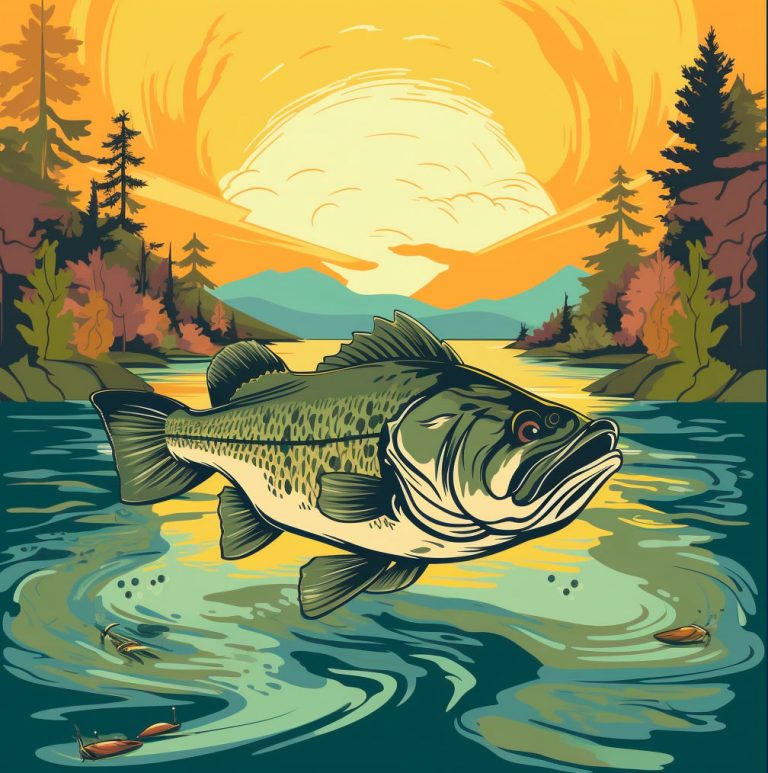
Do Bass Like Topwater In The Fall?
Introduction As an avid fisherman, one of my favorite things to do is to fish for bass during the fall season. There’s something about the crisp air, beautiful scenery, and the challenge of catching these elusive fish that draws me to it every year. One of the most debated topics among bass fishermen during this […]

How To Catch Bass In September
Introduction As a passionate bass angler, I understand the challenges that come with trying to catch these elusive fish. While many people believe that summertime is the best time to catch bass, I believe that September can be a great time to land some big ones. With the right techniques, strategies, and tools, you can […]

What Colors Do Bass Like In The Fall
Introduction As an avid fisherman, I’ve spent countless hours on the water searching for the perfect catch. Over the years, I’ve learned that choosing the right color for my lures is crucial to catching bass. Each season brings its own set of challenges, and fall is no exception. In this article, I’ll explore what colors […]
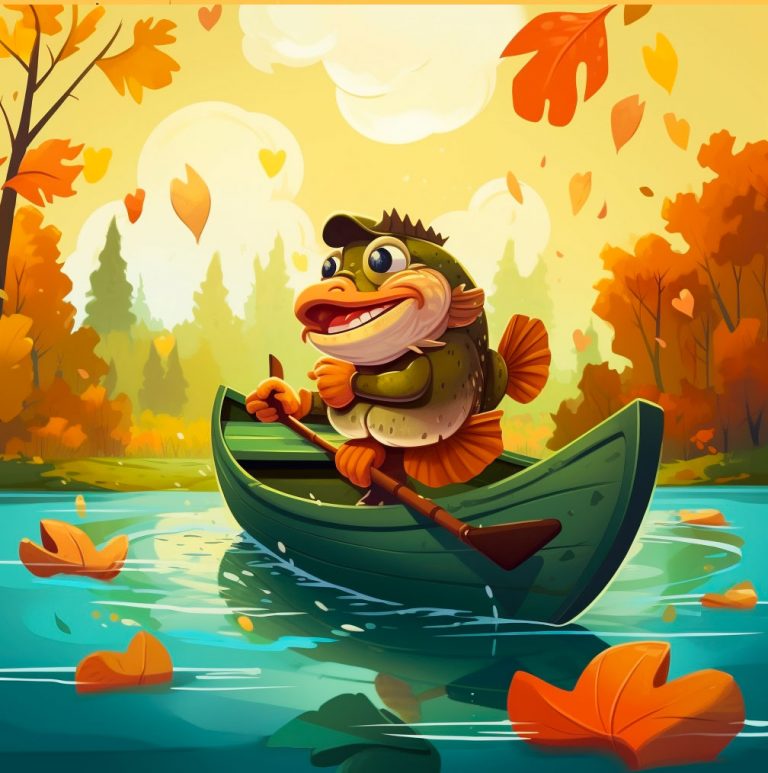
How to catch bass in October
Introduction As an avid bass fisherman, I have spent many hours on the water trying to figure out the best techniques for catching bass in every season. October, in particular, can be a tricky time of year to catch bass. However, with the right approach and techniques, it’s possible to have a successful day on […]

